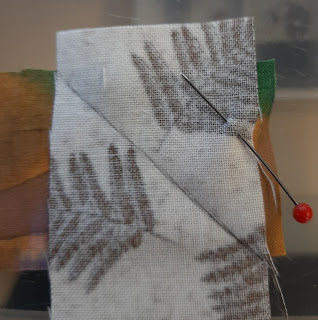Blog 530
I dislike having a mound of unfinished work lying around in
my room so my aim now is to get these projects completed before I move forward
creatively. I am starting with the scrap quilt shown below, which I haven’t
named yet; perhaps something original will come to mind as I am working on it!
This particular quilt is very large and will be a pain to control under my
standard sewing machine which is probably another reason I haven’t tackled it
yet. I am in the pleasant situation of having loads of fabric but not the large
pieces that I need for the backs of quilts, so I need to get imaginative!
The first thing I did was to cut the quilt up into smaller
units. I took a deep breath and cut along the middle of the black strips
joining the rows together (the remaining pieces will need removing eventually
but will be easier to tackle as smaller unit)
And then I looked at my remaining stash of fabrics, ones
which aren’t the Batiks and Bali’s which I prefer. There is a lot of variety
and lots of different sizes and they are not co-ordinated at all; so I decided
to cut them all up into workable strips. This involved a lot of time at the
ironing board and the cutting board but hopefully it will be worth it!
I cut the fabric into strips of varying widths, namely 3”,
2½”, 2”, 1½” 1”. It took a long while and even after cutting masses of fabric,
the basket didn’t look particularly empty!
Another decision I made was to join the strips together to
give a continuous length in order to keep the fabrics from creasing and keep
them tidy. I prefer to do a diagonal join and this is how it is done. The
strips are placed RS together but at right angles to one another with a slight
over-lap. They can be pinned and the sewing line can be marked as shown below.
If you don’t want to mark all your fabric pieces, and who
does, you can mark a guide line on your sewing machine with a permanent marker.
This line is drawn in a direct line from the needle towards the edge of the
sewing machine and it is invaluable for accuracy. Just let the machine do the
sewing whilst you watch the point where the fabrics overlap travel along the
line.
I used a string-piecing method to save on thread and then I
went to sit in front of the log fire to cut the threads and do the trimming with
a tray on my lap. So far, so good.














lovely and cheerful. Awena
ReplyDeleteThanks Awena and Happy New Year!
ReplyDeleteThere's still a lot to do on this project but of course I have the time to do it in lockdown 😊